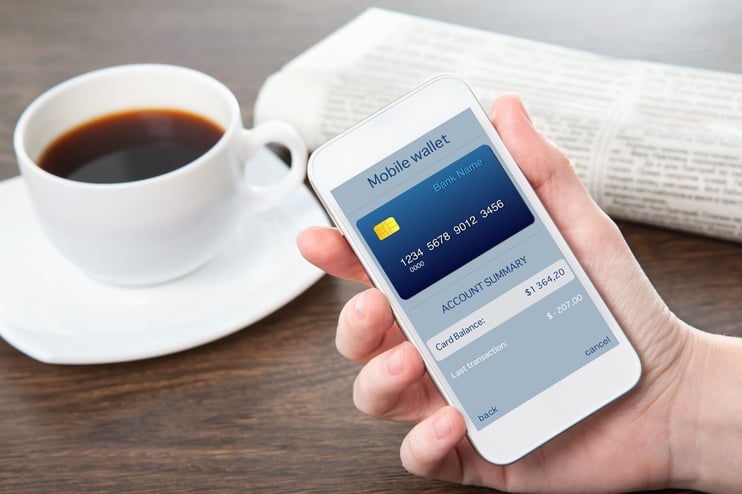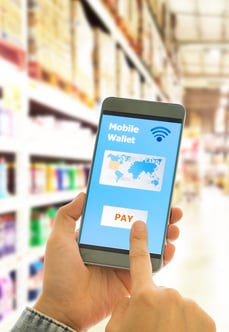 Americans are addicted to their smartphones. Just look around when you go down the street. Almost everyone is looking at their device as they are walking. Nobody is paying attention to the sidewalk, cross streets or what is going on around them. Data from Apple shows that the average user pulls out their phone 80 times a day! The characteristics of the device — portability, always on, responsiveness, unlimited access to information and a multitude of apps — make it a compelling and trusted partner. The smartphone has profoundly impacted our societal habits in just a few years, and it will not reverse itself.
Americans are addicted to their smartphones. Just look around when you go down the street. Almost everyone is looking at their device as they are walking. Nobody is paying attention to the sidewalk, cross streets or what is going on around them. Data from Apple shows that the average user pulls out their phone 80 times a day! The characteristics of the device — portability, always on, responsiveness, unlimited access to information and a multitude of apps — make it a compelling and trusted partner. The smartphone has profoundly impacted our societal habits in just a few years, and it will not reverse itself.
A psychology professor at Washington University in St. Louis, Tim Bono, has conducted an experiment for the last few years: see if you can sit quietly for six minutes with no phone, television or radio, occupying yourself only with the thoughts in your head. The results: only 67 percent of the surveyed group was able to remain seated and stay awake for six minutes. More than 30 percent of the group had to check their phones at least once. The conclusion was that humans are “wired for distraction” and find it too difficult to just sit and think.
“There is a natural tendency for our minds to disengage with tasks requiring focused attention and seek stimulation elsewhere,” said Bono. Now we know why people are addicted to using their smartphones!
In October, Nicolas Carr wrote an article published in the Wall St. Journal that got a lot of attention. Carr said, “The extraordinary usefulness gives these devices an unprecedented hold on our attention and vast influence over our thinking and behavior.” This is not necessarily a good thing as it can lead to cognitive decline and lack of focus, he contends.
Mobile Wallets Remain in Pocket
Given all that, it is puzzling why mobile payments and mobile wallets have not yet achieved any meaningful traction at the merchant or consumer level. This is surprising given the enormous marketing effort by the providers of about 60 mobile wallet solutions to date. All major players have delivered their own version of the mobile wallet, such as Apple Pay, Android Pay and Samsung Pay, and others such as MasterPass (MasterCard) and ChasePay. Some of these work using Near Field Communication (NFC) technology. ApplePay requires that your transaction be verified by a fingerprint ID or passcode. Android Pay just requires that the phone is unlocked and held up to the terminal.
A study by Cayan shows that during the 2017 Black Friday shopping day, smartphone based payment apps accounted for just one percent of its retail partners’ one million plus in-store payment transactions.
Cayan SVP Dominic Lachowicz says the study revealed that showing the consumer a small ad/logo/splash screen on the POS device promoting mobile payment might incent a consumer to try it, but that “customer’s payments preferences quickly return to baselines once those ads are removed. … Today’s customers have to carry both a smartphone and a wallet, and it’s likely that retailer’s patchy/inconsistent support for mobile payments is causing customers to fall back on muscle memory once those reminders are removed.”
Reasons for Not Using Mobile Wallets
 Consumers give two reasons for not using a mobile wallet. First, they are used to swiping a card and numerous surveys say they find it easier than using a mobile wallet. That may change. But what might not change is the other reason given by consumers: they do not trust the security of mobile payments. We’ll deal with this in a minute. But the fact is that the companies offering mobile wallets have failed in the marketplace up to now.
Consumers give two reasons for not using a mobile wallet. First, they are used to swiping a card and numerous surveys say they find it easier than using a mobile wallet. That may change. But what might not change is the other reason given by consumers: they do not trust the security of mobile payments. We’ll deal with this in a minute. But the fact is that the companies offering mobile wallets have failed in the marketplace up to now.
Let’s define what we are talking about here. A mobile wallet is not a physical item. It is a virtual place where you can keep and store your payment cards and the associated loyalty and rewards programs and coupons and special offers. But wait, there’s more.
You can store almost anything related to payments: airline or theatre tickets, your car insurance ID form, your library card and someday, your driver’s license. There is other connectivity too: you can make P2P payments, connect to social media, get comparison shopping offers or location-aware offers, etc.
Change on the Horizon
There are some trends that bode well for mobile wallets however. We can see from the success of Amazon Prime (half of U.S. adults are members) that increasingly Americans want things right away and are not willing to wait. This phenomenon has been called “All consuming-On Demand.” Now, consumers will use their phone to research what they want to buy, comparison shop, reserve or buy the item, track the order status, get updates and plan for the pickup in real time.
Another trend we will see emerging is the increasing role of the “digital assistant,” coupled with artificial intelligence. The new mobile device personal assistant is supposed to provide consumers “helpful insights” based on their previous online habits, searches and behaviors. It will alert consumers to special deals on the products they know and like.
A third trend, less obvious, is the expected rise of Bluetooth technology, although this has as yet not achieved any meaningful market penetration.
These projections might solve the adoption issue. But solving the concerns about security is not so easy. Stolen debit or credit card details can be used to set up Apple Pay or Android Pay. These details can be obtained from anywhere. As Holly Whitehead from the International Compliance Association points out, the card could have been skimmed or a website hacked. Another potential issue is an account takeover.
Here, when the account is set up and the bank sends a text message or makes a phone call to verify the account, the phone numbers can be hijacked. What is happening then is that the hijacker will forward the victim’s calls or messages to the hacker’s phone. When this happens, the verification is passed along with the information already stolen from other organizations. This can happen because surveys show that many consumers just don’t lock their phones, and over half that do lock them have an easily hackable code. Moreover, if a mobile device is lost or stolen, the thief has got free access to the victim’s bank account, or multiple accounts, if more than one card is stored in the mobile wallet.
Every time a consumer hears about a data breach or reads a story about stolen credentials or a hijacked account, they will be suspicious about the security of a mobile wallet. Studies routinely show that safety and security are much more important to a consumer than making a faster payment.
Secure Payments
When it comes to safety and security, it doesn’t get much better than a check, particularly if that check is guaranteed by CrossCheck. Just follow the workflow and you will see why. First, the consumer goes to a store to buy a high ticket item, something over a thousand dollars. When they go to pay, they find that they are somewhat challenged in coming up with all the cash today.
For instance, the automatic transmission fails on their car on the way to work today and the shop calls and says that it will not be a simple repair costing $500; it will be a complete overhaul that will cost $2500.
Fortunately, the transmission shop uses CrossCheck’s Multiple Check program, and that is why hundreds of AAMCO shops are long-term CrossCheck users. The consumer makes the decision on how many checks to write, how much each one is, and when they should be deposited. They don’t have to apply for credit and they don’t have to pay interest.
The consumer writes four checks and hands them to the merchant, who runs them through an imager. The merchant hands the checks back to the consumer with a receipt. CrossCheck takes it from there; we do the banking and put the funds in the merchant’s account, and even if the checks bounce the merchant is given the full face amount of the checks on the due dates. When we get the check image file from our imager, we put it behind a firewall and from there it goes into our data library where it is fully secure. As you can see, it is a lot more secure than a credit card payment or even a mobile payment. And that’s why merchants trust CrossCheck to not just keep them whole, but to protect their data and the consumer’s check data too!
Download our free Multiple Check guide to learn how it can help increase sales and mitigate risk at your business.



